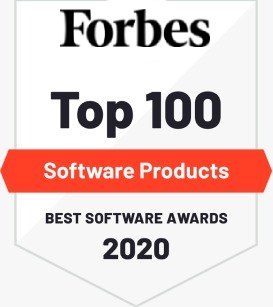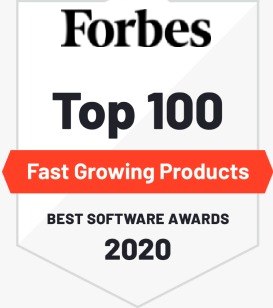Section 1 : Introduction
|
|
Lecture 1 | INTRODUCTION TO BRAINMEASURES PROCTOR SYSTEM | |
|
|
Lecture 2 | About Certification | |
|
|
Lecture 3 | About Proctor Testing | |
|
|
Lecture 4 | All Course Resources + Notebooks | |
|
|
Lecture 5 | Remove - INTRODUCTION TO BRAINMEASURES PROCTOR SYSTEM |
Section 2 : Deep Learning and TensorFlow Fundamentals
Section 3 : Neural network regression with TensorFlow
Section 4 : Neural network classification in TensorFlow
Section 5 : Computer Vision and Convolutional Neural Networks in TensorFlow
Section 6 : Transfer Learning in TensorFlow Part 1 Feature extraction
|
|
Lecture 1 | What is and why use transfer learning | 00:10:12 Duration |
|
|
Lecture 2 | Downloading and preparing data for our first transfer learning model | 00:14:40 Duration |
|
|
Lecture 3 | Introducing Callbacks in TensorFlow and making a callback to track our models | 00:10:01 Duration |
|
|
Lecture 4 | Exploring the TensorFlow Hub website for pretrained models | 00:09:51 Duration |
|
|
Lecture 5 | Building and compiling a TensorFlow Hub feature extraction model | |
|
|
Lecture 6 | Blowing our previous models out of the water with transfer learning | 00:09:13 Duration |
|
|
Lecture 7 | Plotting the loss curves of our ResNet feature extraction model | 00:07:36 Duration |
|
|
Lecture 8 | Building and training a pre-trained EfficientNet model on our data | 00:09:42 Duration |
|
|
Lecture 9 | Different Types of Transfer Learning | 00:11:40 Duration |
|
|
Lecture 10 | Comparing Our Model's Results | 00:15:17 Duration |
|
|
Lecture 11 | TensorFlow Transfer Learning Part 1 challenge, exercises & extra-curriculum | |
|
|
Lecture 12 | Exercise Imposter Syndrome | 00:02:56 Duration |
Section 7 : Transfer Learning in TensorFlow Part 2 Fine tuning
Section 8 : Transfer Learning with TensorFlow Part 3 Scaling Up
Section 9 : Milestone Project 1 Food Vision Big™
Section 10 : NLP Fundamentals in TensorFlow
Section 11 : Milestone Project 2 SkimLit
Section 12 : Time Series fundamentals in TensorFlow + Milestone Project 3 BitPredict
Section 13 : Passing the TensorFlow Developer Certificate Exam
|
|
Lecture 1 | Get ready to be TensorFlow Developer Certified! | |
|
|
Lecture 2 | What is the TensorFlow Developer Certification | 00:05:29 Duration |
|
|
Lecture 3 | Why the TensorFlow Developer Certification | 00:06:57 Duration |
|
|
Lecture 4 | How to prepare (your brain) for the TensorFlow Developer Certification | 00:08:14 Duration |
|
|
Lecture 5 | How to prepare (your computer) for the TensorFlow Developer Certification | 00:12:43 Duration |
|
|
Lecture 6 | What to do after the TensorFlow Developer Certification exam | 00:02:14 Duration |
Section 14 : Where To Go From Here
|
|
Lecture 1 | Become An Alumni | |
|
|
Lecture 2 | About Proctor Testing | |
|
|
Lecture 3 | About Certification |
Section 15 : Appendix Machine Learning Primer
|
|
Lecture 1 | Quick Note Upcoming Videos | |
|
|
Lecture 2 | What is Machine Learning | 00:06:52 Duration |
|
|
Lecture 3 | AIMachine LearningData Science | 00:04:51 Duration |
|
|
Lecture 4 | Exercise Machine Learning Playground | 00:06:16 Duration |
|
|
Lecture 5 | How Did We Get Here | 00:06:03 Duration |
|
|
Lecture 6 | Exercise YouTube Recommendation Engine | 00:04:25 Duration |
|
|
Lecture 7 | Types of Machine Learning | 00:04:41 Duration |
|
|
Lecture 8 | Are You Getting It Yet | |
|
|
Lecture 9 | What Is Machine Learning Round 2 | 00:04:45 Duration |
|
|
Lecture 10 | Section Review | 00:01:48 Duration |
Section 16 : Appendix Machine Learning and Data Science Framework
|
|
Lecture 1 | Quick Note Upcoming Videos | |
|
|
Lecture 2 | Section Overview | 00:03:09 Duration |
|
|
Lecture 3 | Introducing Our Framework | 00:02:38 Duration |
|
|
Lecture 4 | 6 Step Machine Learning Framework | 00:04:59 Duration |
|
|
Lecture 5 | Types of Machine Learning Problems | 00:10:32 Duration |
|
|
Lecture 6 | Types of Data | 00:04:51 Duration |
|
|
Lecture 7 | Types of Evaluation | 00:03:31 Duration |
|
|
Lecture 8 | Features In Data | 00:05:22 Duration |
|
|
Lecture 9 | Modelling - Splitting Data | 00:05:58 Duration |
|
|
Lecture 10 | Modelling - Picking the Model | 00:04:35 Duration |
|
|
Lecture 11 | Modelling - Tuning | 00:03:17 Duration |
|
|
Lecture 12 | Modelling - Comparison | 00:09:32 Duration |
|
|
Lecture 13 | Overfitting and Underfitting Definitions | |
|
|
Lecture 14 | Experimentation | 00:03:35 Duration |
|
|
Lecture 15 | Tools We Will Use | 00:04:00 Duration |
|
|
Lecture 16 | Optional Elements of AI |
Section 17 : Appendix Pandas for Data Analysis
|
|
Lecture 1 | Quick Note Upcoming Videos | |
|
|
Lecture 2 | Section Overview | 00:02:27 Duration |
|
|
Lecture 3 | Downloading Workbooks and Assignments | |
|
|
Lecture 4 | Pandas Introduction | 00:04:29 Duration |
|
|
Lecture 5 | Series, Data Frames and CSVs | 00:13:21 Duration |
|
|
Lecture 6 | Data from URLs | |
|
|
Lecture 7 | Describing Data with Pandas | 00:09:49 Duration |
|
|
Lecture 8 | Selecting and Viewing Data with Pandas | 00:11:08 Duration |
|
|
Lecture 9 | Selecting and Viewing Data with Pandas Part 2 | 00:13:07 Duration |
|
|
Lecture 10 | Manipulating Data | 00:13:57 Duration |
|
|
Lecture 11 | Manipulating Data 2 | 00:09:57 Duration |
|
|
Lecture 12 | Manipulating Data 3 | 00:10:12 Duration |
|
|
Lecture 13 | Assignment Pandas Practice | |
|
|
Lecture 14 | How To Download The Course Assignments | 00:07:43 Duration |
Section 18 : Appendix NumPy
|
|
Lecture 1 | Quick Note Upcoming Videos | |
|
|
Lecture 2 | Section Overview | 00:02:41 Duration |
|
|
Lecture 3 | NumPy Introduction | 00:05:18 Duration |
|
|
Lecture 4 | Quick Note Correction In Next Video | |
|
|
Lecture 5 | NumPy DataTypes and Attributes | 00:14:06 Duration |
|
|
Lecture 6 | Creating NumPy Arrays | 00:09:22 Duration |
|
|
Lecture 7 | NumPy Random Seed | 00:07:17 Duration |
|
|
Lecture 8 | Viewing Arrays and Matrices | 00:09:35 Duration |
|
|
Lecture 9 | Manipulating Arrays | 00:11:32 Duration |
|
|
Lecture 10 | Manipulating Arrays 2 | 00:09:44 Duration |
|
|
Lecture 11 | Standard Deviation and Variance | 00:07:10 Duration |
|
|
Lecture 12 | mp4 | 00:07:27 Duration |
|
|
Lecture 13 | Dot Product vs Element Wise | 00:11:45 Duration |
|
|
Lecture 14 | Exercise Nut Butter Store Sales | 00:13:04 Duration |
|
|
Lecture 15 | Comparison Operators | 00:03:34 Duration |
|
|
Lecture 16 | Sorting Arrays | 00:06:20 Duration |
|
|
Lecture 17 | Turn Images Into NumPy Arrays | 00:07:37 Duration |
|
|
Lecture 18 | Assignment NumPy Practice | |
|
|
Lecture 19 | Optional Extra NumPy resources |


